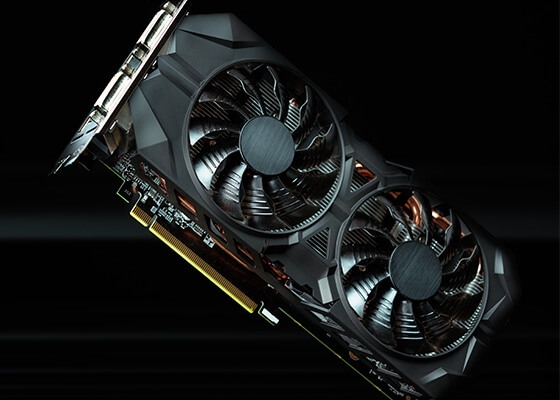Graphic Processors: Bridging Creativity and Technology
Graphic processors, also known as graphics processing units (GPUs), are specialized electronic circuits designed to accelerate the processing of images and render graphics in computers, gaming consoles, and mobile devices. Originally developed to offload graphical tasks from the central processing unit (CPU), GPUs have evolved into powerful components that play a crucial role in a wide range of applications beyond just rendering graphics.
The journey of Graphic processors began with the need for more efficient and faster rendering of graphics, particularly in video games and graphical user interfaces. Early GPUs were primarily focused on handling 2D graphics, but as the demand for more realistic and immersive visuals grew, the capabilities of GPUs expanded to include 3D rendering. Over time, manufacturers like NVIDIA and AMD pushed the boundaries of GPU technology, leading to significant advancements in performance and efficiency.
Graphic processors are built with a highly parallel architecture, consisting of numerous cores that can handle multiple tasks simultaneously. This parallelism allows GPUs to process large volumes of data quickly, making them well-suited for tasks that require simultaneous computations. Unlike CPUs, which are optimized for sequential processing, GPUs excel at handling parallel workloads, making them indispensable for rendering complex graphics, running simulations, and performing scientific computations.
While Graphic processors, are renowned for their role in gaming, their applications extend far beyond rendering high-quality visuals. In recent years, GPUs have become instrumental in fields such as artificial intelligence (AI) and machine learning, where their parallel processing capabilities enable the rapid training of neural networks. Researchers and data scientists leverage GPUs to accelerate deep learning algorithms, significantly reducing the time required to process and analyze vast datasets.
Moreover, GPUs are essential in cryptocurrency mining, where they perform the complex calculations needed to validate transactions and secure blockchain networks. The high computational power of GPUs makes them ideal for solving the cryptographic puzzles involved in mining cryptocurrencies like Bitcoin and Ethereum.
Graphic processors have revolutionized creative industries, including animation, visual effects, and video editing. Professionals in these fields rely on GPUs to render intricate scenes, simulate realistic environments, and process high-resolution video footage. The ability to perform real-time rendering allows artists and designers to visualize their work instantly, enhancing creativity and productivity.
The future of graphic processors looks promising, with continuous advancements in technology driving innovation. The development of ray tracing technology, which simulates the way light interacts with objects in real-time, is set to elevate the realism of graphics in gaming and film. Additionally, the integration of AI capabilities directly into GPUs will further enhance their versatility, enabling more intelligent and efficient processing.
In conclusion, graphic processors have evolved from simple graphics accelerators to versatile components that power a wide range of applications. Their parallel processing capabilities make them indispensable in gaming, AI, scientific research, and creative industries. As technology continues to advance, GPUs will undoubtedly play a pivotal role in shaping the future of computing and visualization.
https://www.marketdigits.com/graphic-processors-market
Graphic Processors: Bridging Creativity and Technology
Graphic processors, also known as graphics processing units (GPUs), are specialized electronic circuits designed to accelerate the processing of images and render graphics in computers, gaming consoles, and mobile devices. Originally developed to offload graphical tasks from the central processing unit (CPU), GPUs have evolved into powerful components that play a crucial role in a wide range of applications beyond just rendering graphics.
The journey of Graphic processors began with the need for more efficient and faster rendering of graphics, particularly in video games and graphical user interfaces. Early GPUs were primarily focused on handling 2D graphics, but as the demand for more realistic and immersive visuals grew, the capabilities of GPUs expanded to include 3D rendering. Over time, manufacturers like NVIDIA and AMD pushed the boundaries of GPU technology, leading to significant advancements in performance and efficiency.
Graphic processors are built with a highly parallel architecture, consisting of numerous cores that can handle multiple tasks simultaneously. This parallelism allows GPUs to process large volumes of data quickly, making them well-suited for tasks that require simultaneous computations. Unlike CPUs, which are optimized for sequential processing, GPUs excel at handling parallel workloads, making them indispensable for rendering complex graphics, running simulations, and performing scientific computations.
While Graphic processors, are renowned for their role in gaming, their applications extend far beyond rendering high-quality visuals. In recent years, GPUs have become instrumental in fields such as artificial intelligence (AI) and machine learning, where their parallel processing capabilities enable the rapid training of neural networks. Researchers and data scientists leverage GPUs to accelerate deep learning algorithms, significantly reducing the time required to process and analyze vast datasets.
Moreover, GPUs are essential in cryptocurrency mining, where they perform the complex calculations needed to validate transactions and secure blockchain networks. The high computational power of GPUs makes them ideal for solving the cryptographic puzzles involved in mining cryptocurrencies like Bitcoin and Ethereum.
Graphic processors have revolutionized creative industries, including animation, visual effects, and video editing. Professionals in these fields rely on GPUs to render intricate scenes, simulate realistic environments, and process high-resolution video footage. The ability to perform real-time rendering allows artists and designers to visualize their work instantly, enhancing creativity and productivity.
The future of graphic processors looks promising, with continuous advancements in technology driving innovation. The development of ray tracing technology, which simulates the way light interacts with objects in real-time, is set to elevate the realism of graphics in gaming and film. Additionally, the integration of AI capabilities directly into GPUs will further enhance their versatility, enabling more intelligent and efficient processing.
In conclusion, graphic processors have evolved from simple graphics accelerators to versatile components that power a wide range of applications. Their parallel processing capabilities make them indispensable in gaming, AI, scientific research, and creative industries. As technology continues to advance, GPUs will undoubtedly play a pivotal role in shaping the future of computing and visualization.
https://www.marketdigits.com/graphic-processors-market
0 Commentaires
0 Parts


